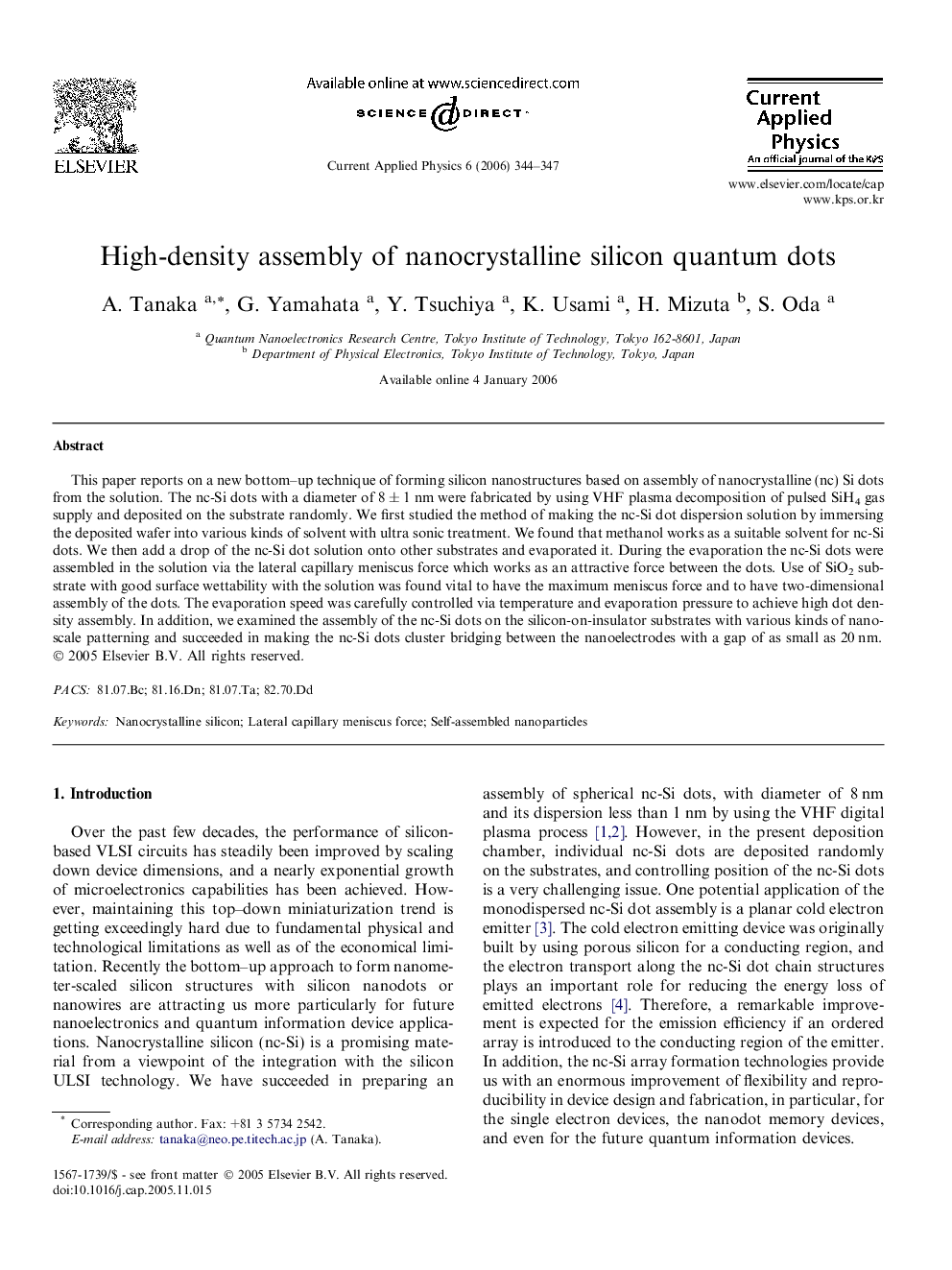| Article ID | Journal | Published Year | Pages | File Type |
|---|---|---|---|---|
| 1787960 | Current Applied Physics | 2006 | 4 Pages |
This paper reports on a new bottom–up technique of forming silicon nanostructures based on assembly of nanocrystalline (nc) Si dots from the solution. The nc-Si dots with a diameter of 8 ± 1 nm were fabricated by using VHF plasma decomposition of pulsed SiH4 gas supply and deposited on the substrate randomly. We first studied the method of making the nc-Si dot dispersion solution by immersing the deposited wafer into various kinds of solvent with ultra sonic treatment. We found that methanol works as a suitable solvent for nc-Si dots. We then add a drop of the nc-Si dot solution onto other substrates and evaporated it. During the evaporation the nc-Si dots were assembled in the solution via the lateral capillary meniscus force which works as an attractive force between the dots. Use of SiO2 substrate with good surface wettability with the solution was found vital to have the maximum meniscus force and to have two-dimensional assembly of the dots. The evaporation speed was carefully controlled via temperature and evaporation pressure to achieve high dot density assembly. In addition, we examined the assembly of the nc-Si dots on the silicon-on-insulator substrates with various kinds of nanoscale patterning and succeeded in making the nc-Si dots cluster bridging between the nanoelectrodes with a gap of as small as 20 nm.
